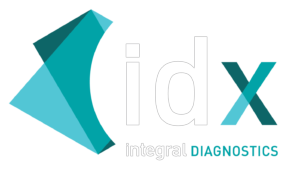An ultrasound scan is a diagnostic imaging procedure used to assess soft tissue structures such as muscles, blood vessels, and organs.
Ultrasound uses a transducer that sends out ultrasonic sound waves at a frequency too high to be heard. When the transducer is placed at certain locations and angles, the ultrasonic sound waves move through the skin and other body tissues to the organs and structures within. The sound waves bounce off the organs like an echo and return to the transducer. The transducer picks up the reflected waves, which are then converted by a computer into an electronic picture of the organs or tissues under study.
Different types of body tissues affect the speed at which sound waves travel. Sound travels the fastest through bone tissue, and moves most slowly through air. The speed at which the sound waves are returned to the transducer, as well as how much of the sound wave returns, is translated by the transducer as different types of tissue.
Ultrasound is used to view internal organs as they function (in ‘real time’), and to assess blood flow through various vessels. Ultrasound procedures are often used to examine many parts of the body such as the abdomen, breasts, female pelvis, prostate, scrotum, thyroid and parathyroid glands, and the vascular system. During pregnancy, ultrasounds are performed to evaluate the development of the fetus.
Technological advancements in the field of ultrasound now include images that can be made in a three-dimensional view and/or four-dimensional view. The added dimension of the 4D is motion, so that it is a 3D view with movement. 4D ultrasound is predominantly used in obstetric scanning and can be used to enhance visualization of fetal abnormalities, picked up by conventional imaging, such as cleft lip, so that parents can recognize what the doctors are describing.

